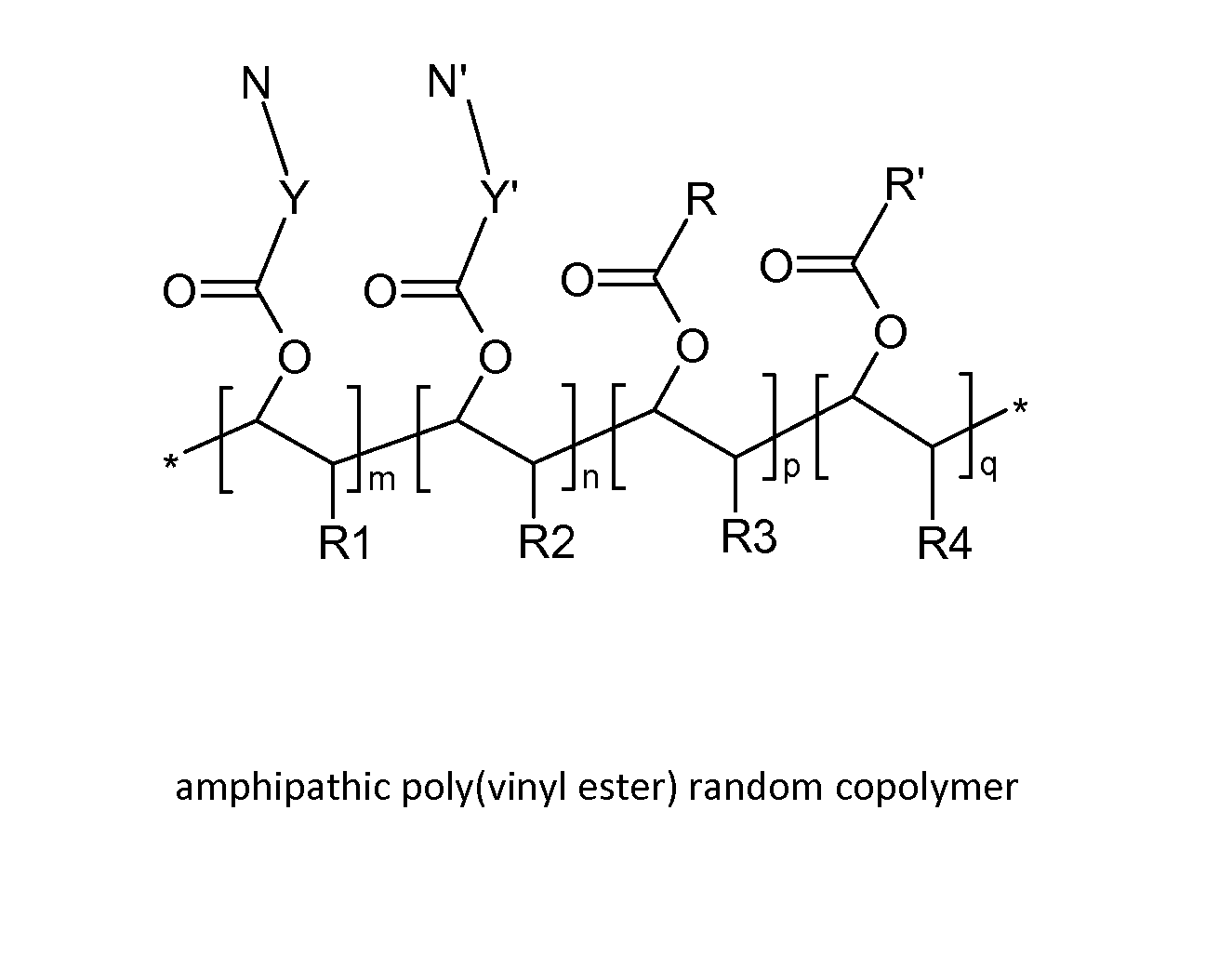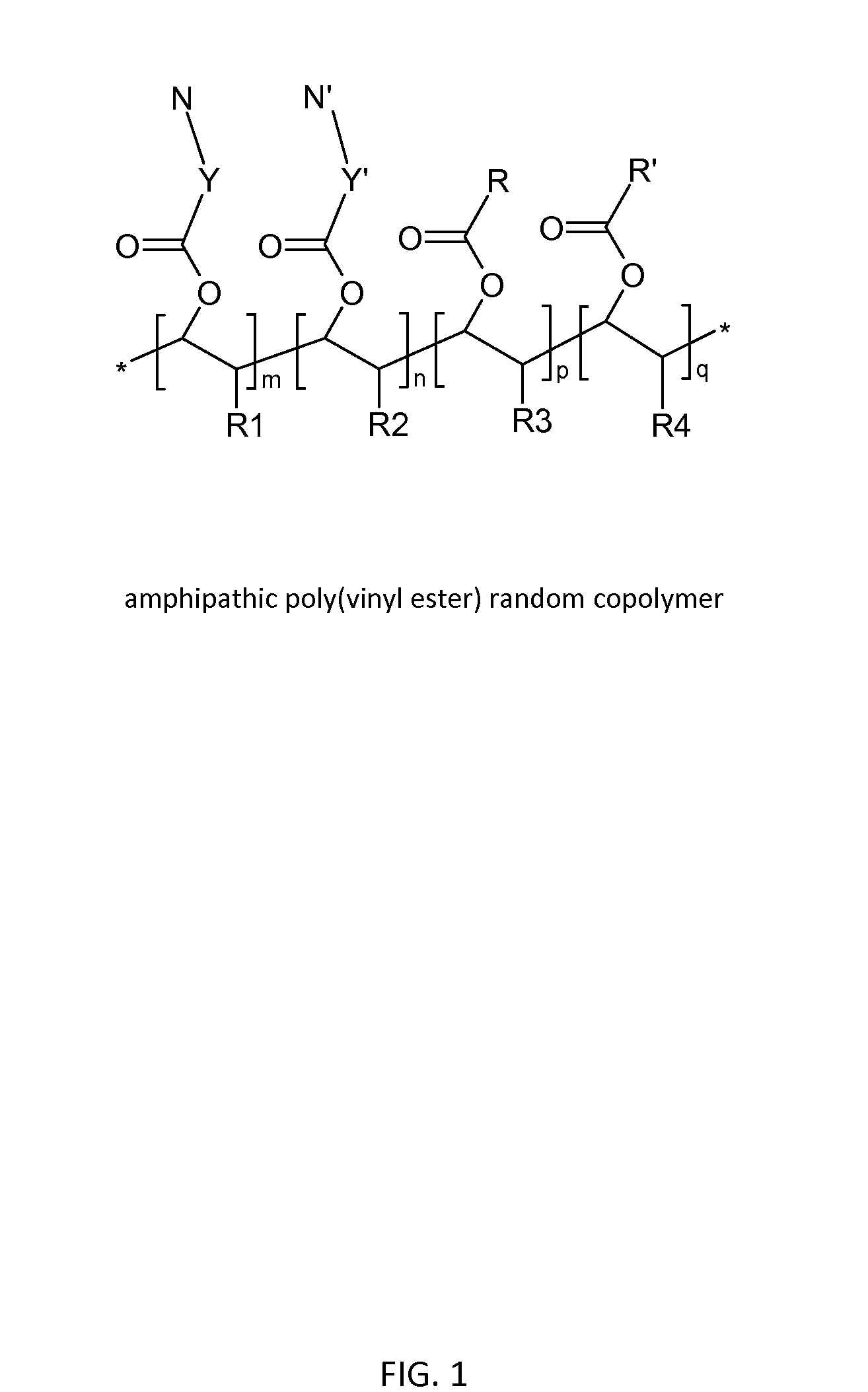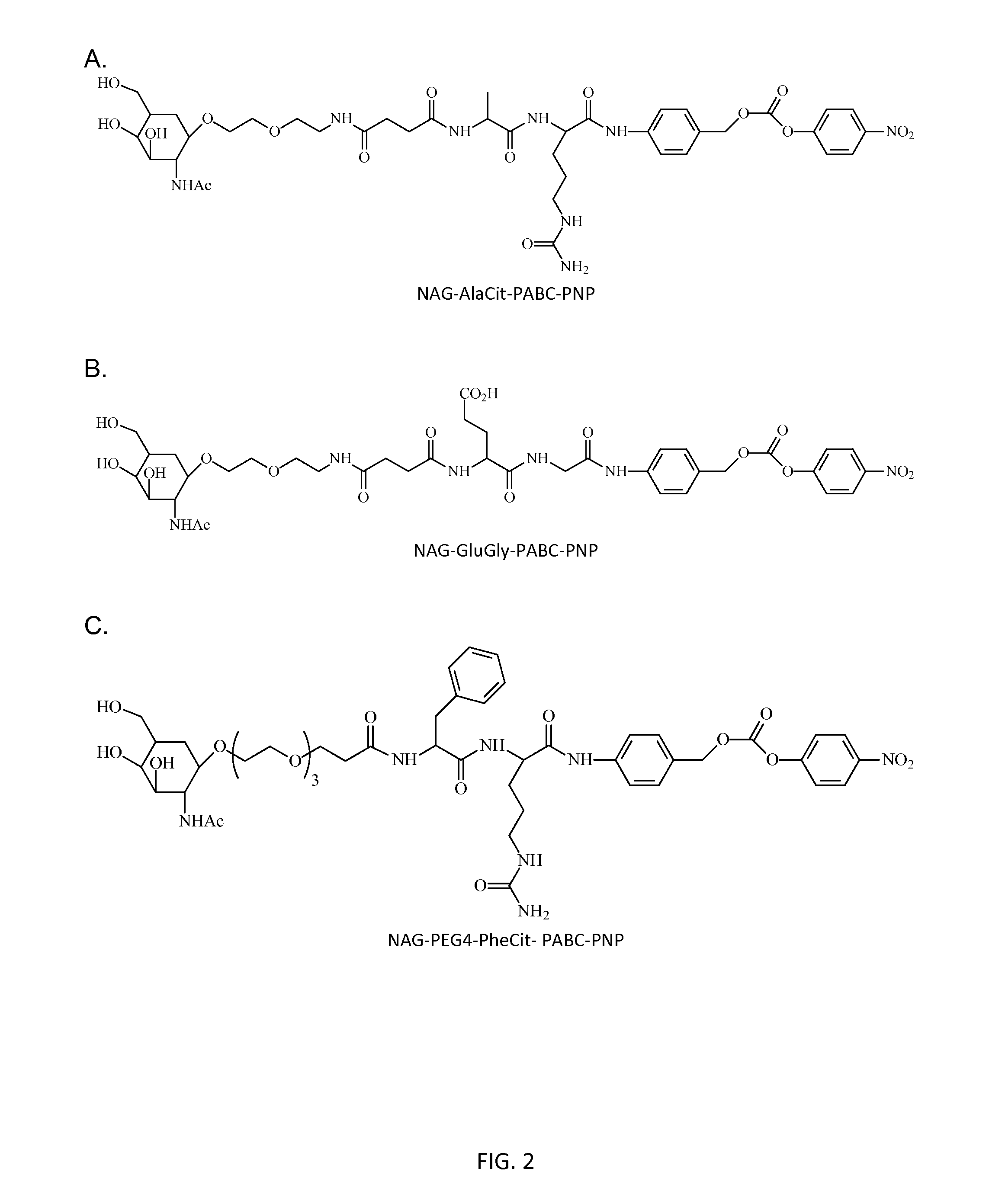Poly(vinyl ester) Polymers for In Vivo Nucleic Acid Delivery
a polymer and nucleic acid technology, applied in the direction of synthetic polymer active ingredients, biochemistry apparatus and processes, drug compositions, etc., can solve the problems of ineffective nucleic acid delivery, complex delivery of polynucleotides using the same transfection reagents, and large hydrophilic polymers used in antisense, rnai, etc., to inhibit endogenous gene expression, inhibit the effect of endogenous gene expression, and beneficial levels of expression
- Summary
- Abstract
- Description
- Claims
- Application Information
AI Technical Summary
Benefits of technology
Problems solved by technology
Method used
Image
Examples
example 1
Synthesis of Polymer Monomers
[0165]A. Materials. Vinyl acetate (VAc), vinyl butyrate (VBu), Pd (II) acetate, γ-(Boc-amino)butyric acid (Boc-GABA), 5-(Boc-amino)valeric acid (Boc-5-Ava-OH), valeric acid, carbon disulfide, sodium hydride, tetrahydrofuran (THF), dimethylsulfoxide (DMSO), diphenylamine, diethyl chloromalonate, and magnesium sulfate (MgSO4) purchased from Sigma-Aldrich and used without further purification. Monomer 3-tert-butoxycarbonylamino-propionic vinyl ester (BAPVE) was purchased from Sigma-Aldrich prior to dissolving in ethyl acetate and passing through an alumina plug to remove inhibitor.
[0166]B. 4-tert-Butoxycarbonylamino-Butyric Acid Vinyl Ester (BABVE) 3 protected amine vinyl ester monomer. γ-(Boc-amino)butyric acid 2 (Boc-GABA, 10 g, 49.20 mmol, CAS 57294-38-9) was dissolved in vinyl acetate 1 (450 mL, 4920 mmol, CAS 108-05-4) at room temperature (RT). Once dissolved, Pd (II) acetate (2.21 g, 9.84 mmol, CAS 3375-31-3) and KOH (276 mg, 4.92 mmol, CAS 1310-58-3)...
example 2
RAFT Copolymerization of Vinyl Ester Monomers to Form Amphiphilic Cationic Poly(vinyl ester) Random Copolymers
[0177]A. Reversible Addition-Fragmentation chain Transfer (RAFT) polymerizations were carried out according to Shipp et al. 2009 using Malonate N,N-diphenyl dithiocarbamate 9 (MDP-DTC).
[0178]Vidyasagar Malepu et al. “RAFT Polymerization of Vinyl Acetate, Styrene and Acrylates Using N,N-Dithiocarbamates” in Controlled / Living Radical Polymerization: Progress in RAFT, DT, NMP &OMRP, Matyjaszewski K, editor; ACS Symposium Series, Vol. 1024, chapter 3, pp 37-47; American Chemical Society, Washington D.C., 2009.
[0179]B. Polymer Calculations: polymer theoretical molecular weight (Mn, th), moles monomers, moles Chain Transfer Agent, moles Initiator.
[0180]General Reaction for Synthesis of Polymer P from Monomers A and B
[0181]A=Hydrophilic Monomer[0182]B=Hydrophobic Monomer[0183]P=Polymer[0184]C=Chain Transfer Agent (CTA)[0185]I=Initiator
[0186]Calculation of Monomer Average Molecular ...
example 3
Synthesis of Poly (5-tert-butoxycarbonylaminovaleric vinyl ester-co-vinyl butyrate), P(BAVVE-co-VBu)
[0204]A. Amine-protected DAN-41947-106 poly(vinyl ester) random copolymer synthesis. Malonate N,N-diphenyl dithiocarbamate (MDPC, 2.56 mg, 0.0066 mmol) and benzoyl peroxide (BPO, 0.795 mg, 0.00328 mmol) were dried in a reaction vessel and 5-tert-Butoxycarbonylamino-valeric vinyl ester 3 (1.00 g, 4.11 mmol) was added. The mixture was degassed by N2 bubbling for 1 h. A separate vial of vinyl butyrate (VBu) was similarly degassed. VBu (345 μL, 2.74 mmol, CAS 123-20-6) was added to the reaction vessel and the mixture was stirred overnight at 95° C. After ˜16 h, the reaction vessel was removed from heat and the solution was allowed to cool to room temperature (RT). The resulting gel was dissolved in 5 mL DCM and the polymer was precipitated by addition of 40 mL hexane. After centrifugation, the solution was decanted and the polymer was rinsed with 5 mL hexane. The rinsed polymer was rediss...
PUM
| Property | Measurement | Unit |
|---|---|---|
| Fraction | aaaaa | aaaaa |
| Interference | aaaaa | aaaaa |
| Gene expression profile | aaaaa | aaaaa |
Abstract
Description
Claims
Application Information
 Login to View More
Login to View More - R&D
- Intellectual Property
- Life Sciences
- Materials
- Tech Scout
- Unparalleled Data Quality
- Higher Quality Content
- 60% Fewer Hallucinations
Browse by: Latest US Patents, China's latest patents, Technical Efficacy Thesaurus, Application Domain, Technology Topic, Popular Technical Reports.
© 2025 PatSnap. All rights reserved.Legal|Privacy policy|Modern Slavery Act Transparency Statement|Sitemap|About US| Contact US: help@patsnap.com



